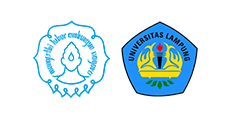Substitution, Augmentation, Modification and Redefinition (SAMR) Model to Improve Student's Critical Thinking Ability
Abstract
The use of technology in learning creates the need for applications and learning media that can improve students' critical thinking skills. The SAMR model (Substitution, Augmentation, Modification, and Redefinition), which offers teaching methods by integrating technology, can affect the learning process by improving students' critical thinking skills. This quantitative study used an experimental approach with a Posttest Only Control Design by dividing the sample into two groups (control and experimental classes) with cluster random sampling technique sampling on 54 students. The results of the post-test cognitive ability of the control class obtained an average value of 16.52, and in the experimental class, 19.63. Furthermore, the results of the post-test effective ability of the control class obtained an average value of 74.76 and in the experimental class of 84.07. This shows differences in students' critical thinking skills between students who use the SAMR model and those who do not use the SAMR model. In the results of the N-Gain analysis that has been carried out on the posttest value of the cognitive ability of the control class and the experimental class, the gain value of 0.33 is included in the medium criteria. While the N-Gain on the posttest value of the cognitive ability of the control class and the experimental class obtained a gain value of 0.19 which is included in the Low criteria. This study proves that the use of the SAMR model influences students' critical thinking skills, and the SAMR model has proven effective in improving students' critical thinking skills.
Keywords
Full Text:
PDFReferences
AlMarwani, M. (2020). Pedagogical potential of SWOT analysis: An approach to teaching critical thinking. Thinking Skills and Creativity, 38(August), 100741. https://doi.org/10.1016/j.tsc.2020.100741
Aprinaldi, A., Widiaty, I., & Abdullah, A. G. (2018). Integrating SAMR learning model in vocational education. IOP Conference Series: Materials Science and Engineering, 434(1). https://doi.org/10.1088/1757-899X/434/1/012309
Ary, D., Jacobs, L. C., & Sorensen, C. (2010). Introduction to Research in Education. Nelson Education, Ltd. To.
Binangbang, J. (2020). The Effect of Substitution, Augmentation, Modification and Redefinition Model on Students’ Writing Skills. Middle Eastern Journal of Research in Education and Social Sciences (MEJRESS), 1(2), 29–51. https://doi.org/10.47631/mejress.v1i2.131
Crompton, H., & Burke, D. (2020). Mobile learning and pedagogical opportunities: A configurative systematic review of PreK-12 research using the SAMR framework. Computers and Education, 156(December 2019), 103945. https://doi.org/10.1016/j.compedu.2020.103945
Hake, R. R. (1998). Interactive-engagement versus traditional methods : A six-thousand-student survey of mechanics test data for introductory physics courses Interactive-engagement versus traditional methods : A six-thousand-student survey of mechanics test data for introduc. American Journal of Physics, 66(64), 64–74. https://doi.org/10.1119/1.18809
Indriyana, B. S., & Kuswandono, P. (2019). Developing Students Higher Order Thinking Skills (HOTS) in Reading: English Teachers Strategies in Selected Junior High Schools. JET (Journal of English Teaching), 5(3), 204. https://doi.org/10.33541/jet.v5i3.1313
Ismail, N. S., Harun, J., Zakaria, M. A. Z. M., & Salleh, S. M. (2018). The effect of Mobile problem-based learning application DicScience PBL on students’ critical thinking. Thinking Skills and Creativity, 28(May), 177–195. https://doi.org/10.1016/j.tsc.2018.04.002
Izza, A., & Rusydiyah, E. F. (2020). Analisis Model SAMR Pada Guru Pendidikan Agama Islam Dalam Mengembangkan Motivasi Belajar Siswa. Edureligia: Jurnal Pendidikan Agama Islam, 04(01), 11–34.
Jaedun, A. (2011). Metodologi Penelitian Eksperimen. In Service I Pelatihan Penulisan Artikel Ilmiah LPMP Provinsi Daerah Yogyakarta, 0–12.
Larsson, K. (2017). Understanding and teaching critical thinking—A new approach. International Journal of Educational Research, 84(December 2016), 32–42. https://doi.org/10.1016/j.ijer.2017.05.004
Lestari, D., Haryani, S., & Sumarti, S. S. (2020). Analysis of Critical Thinking Skills in Vocational High School Automotive Engineering Students. Journal of Innovative Science Education, 9(1), 103–108. htpps://doi.org/ 10.15294/JISE.V8I3.32379
Mahanal, S., Zubaidah, S., Sumiati, I. D., Sari, T. M., & Ismirawati, N. (2019). RICOSRE: A learning model to develop critical thinking skills for students with different academic abilities. International Journal of Instruction, 12(2), 417–434. https://doi.org/10.29333/iji.2019.12227a
Mulyono, H., & Agustin, E. E. (2020). Pengaruh model pembelajaran project based learning terhadap hasil belajar siswa pada mata pelajaran pemrograman dasar di SMK Muhammadiyah 1 Padang. JIPI (Jurnal Ilmiah Penelitian Dan Pembelajaran Informatika), 05(01), 20–24. https://doi.org/10.29100/jipi.v5i1.1518
Netolicka, J., & Simonova, I. (2017). SAMR model and bloom’s digital taxonomy applied in blended learning/teaching of general english and ESP. Proceedings - 2017 International Symposium on Educational Technology, ISET 2017, 277–281. https://doi.org/10.1109/ISET.2017.68
Nyayu, S. Y., Heru, S., & Masagus, S. (2019). The Use of Technology Integration Samr Model in Teaching English. IDEAS: Journal on English Language Teaching and Learning, Linguistics and Literature, 7(1), 1–5. https://doi.org/10.24256/ideas.v7i1.720
Retana, R. C. (2021). Technology Integration Models into adult education: TPACK and SAMR. Actualidades Investigativas En Educación, 21(1), 1–27. https://doi.org/10.15517/aie.v21i1.42411
Setiarini, K. P., Agustini, K., Made, I., & Sunarya, G. (2016). Pengaruh E-Modul Berbasis Metode Pembelajaran Problem Based Learning Terhadap Hasil Dan Motivasi Belajar Siswa Pada Mata Pelajaran Pemrograman Dasar (Studi Kasus: Kelas X Multimedia Di Smk Negeri 3 Singaraja). Kumpulan Artikel Mahasiswa Pendidikan Teknik Informatika (KARMAPATI), 5(2), 277–287. https://ejournal.undiksha.ac.id/index.php/KP/article/view/8220
Song, X. (2016). ‘Critical Thinking’ and Pedagogical Implications for Higher Education. East Asia, 33(1), 25–40. https://doi.org/10.1007/s12140-015-9250-6
Tang, T., Vezzani, V., & Eriksson, V. (2020). Developing critical thinking, collective creativity skills and problem solving through playful design jams. Thinking Skills and Creativity, 37, 1–24. https://doi.org/10.1016/j.tsc.2020.100696
Wibowo, M. A. A., & Munadi, S. (2020). Critical Thinking Skills through Industrial Revolution 4.0 for Vocational Education. Journal of Mechanical Engineering Education, 5(2), 91–98. http://doi.org/10.30870/vanos.v5i2.8784
Wibowo, M. A. A., Purwaningsih, N., & Munadi, S. (2018). Industrial Revolution 4 . 0 : Critical Thinking Skills in Vocational Education. The 1st PGSD UST International COnference on Education, 1, 81–84.













